士心凝界畫 豪氣垂丹青

士心凝界畫 豪氣垂丹青
——書畫家劉士豪藝術簡介
劉士豪,生於1968年,字道裡,號石泉山人,齋號跬步堂,江蘇揚州人,國畫大師溫國良先生關門弟子。北京文化发展基金会艺术惠民专项基金界画艺术馆馆长,北京798国际艺术交流中心界画交流学会会长。國家一級美術師、國培高級教師。道裡先生擅長“界畫”,其畫作多為中外名人志士喜愛並收藏;專設畫室于京華,以為傳承與弘揚“界畫”藝術之所。
畫家解讀界畫:
“界畫”乃中國繪畫特色門類,源起已無從考,蓋晉代已有,成于隋、唐,興于宋,至元明雖偶有佳作;然漸趨式微,至清則近乎絕響,故當代知之者鮮。繪畫之道,在形神兼備,形則求工,描摹如生;神者蘊藉,氣韻悠遠;形神合一,方有俊偉齊物、尺幅千里之佳作。界畫吸收各派之長,狀物則栩栩如生,如在目前;寫意則清雋秀遠,雍容大氣;得宮廷畫之細密,兼文人畫之疏淡;細品遠觀,皆有深意,賞玩品鑒,各有所得。是以近代以來,界畫復興,書畫市場,洛陽紙貴;有志之士,傾慕如風。余亦有幸,師從當代大家溫國良先生,丹青為樂,不知老之將至,富貴浮雲,欣歎吾生有托。余之畫作,承古意以繼先賢,融今法以求精絕,雲山幽遠,以天地為心;曲廊回轉,以尺幅安命。畫者,畫吾心也。大漠孤煙,長河落日,無非氣象;小橋流水,寶簾銀鉤,亦是境界。東坡有句:“君臣一夢,今古空名,但遠山長,雲山亂,曉山青。”人事如煙,了無餘痕,詞中有畫,猶堪玩味。仁者樂山,智者樂水,界畫者,其仁智之表乎?功名之際能守拙,義利之辨不動心;身在鬧市,情寄漁樵,囊篋雖愁,心憂天下;畫中有道,欲辨忘言。石泉山人,惟願同好,共辨疑義,同賞清幽。
The Painter’s Profile
Liu Shihao, born in 1968, in Yangzhou, Jiangsu province, who has a courtesy name Daoli(inside the Great Way) and styles himself Shiquanshanren(a hermit in Stone Spring Mountain) and his studio Kuibutang(the studio of step-by-step progress), is the last disciple of the traditional Chinese Painting master Wen Guoliang. He is a national first-class artist as well as a senior instructor in Guopei School. Mr. Daoli is an expert on Ruler Painting whose works are admired and mostly collected by celebrities at home and abroad. In recent years he established a studio in Beijing, where he has been studying and promoting the art of Ruler Painting.
Ruler Painting in the Eyes of the Painter
As a particular category of Chinese painting, Ruler Painting offers little clue to its exact origin. Evidence has it that Ruler Painting originated from the Jin Dynasty(265-420), matured in the Sui(581-617) and Tang(618-907)Dynasties, flourished in the Song Dynasty(960-1279) and gradually declined in the Yuan(1271-1368) and Ming(1368-1644)Dynasties with occasional masterpieces nonetheless. In the Qing Dynasty(1644-1911) Ruler Painting degraded into such a sorry state that it was little known among the contemporaries. So to speak, the way of painting attaches great importance to the unity of form and spirit, with the former seeking meticulous lifelikeness and the latter invoking subtle and profound perception. Only by consummate integration of the two elements can a painter depict a true-to-life panorama on a small scroll. In this respect Ruler Painting is a case in point, which absorbs merits of various schools. In depiction of objects it achieves the effect of verisimilitude, while in sketching the landscape a sense of elegant magnitude is conveyed. The exquisite fineness of palace painting and the studied casualness of scholars’ painting are perfectly combined in Ruler Painting, which is well worth admiration and connoisseurship from different views of point. Hence recent years witnessed a revival of Ruler Painting with a thriving demand and more and more learners engaged. I am also one of them and in good luck to have Mr. Wen Guoliang as my master. Intoxicated in painting, I forget the invasion of years; discarding fickle fame, in art I find a lifelong companion. Following predecessors’ steps, my humble works inherit their traditional spirit; learning from modern techniques, I endeavor to polish and perfect my skills. The vast cloud-sky and remote mountains are a token of magnanimous heart, accommodating heaven and earth; while the winding verandas a miniature of the predestined fate, containing life’s vicissitudes. Thus in painting I depict my mind. The single column of smoke rising from a vast desert and the setting sun shining on a great river are marvelous scenes, yet no less are the small bridge spanning on the flowing water and the treasured curtain hung on silver clasps. Big or small, both impart a tranquil state of mind. Several lines of Su Shi read: “Both the sovereign and the subject’s dreams leave a futile fame,/ Yet the mountain stays the same:/ Looming long when seen afar,/Full of charm in cloud/And at dawn a green mound. While the bygones have vanished without a trace, the scenery depicted in the lyric remains permanently to be savored. If the benevolent take delight in mountains and the wise in waters, is Ruler Painting the outer manifestation of benevolence and wisdom? The painter sticks to his faith when tempted by riches and ranks, nor can profit or favor sway a heart of righteousness. In hustle and bustle he enjoys the leisurely freedom of a fisherman or a woodcutter; being destitute, he keeps himself concerned about the world. In painting truly lies the Great Way, yet words fail to say. Now Shiquanshanren extends his warm welcome to fellows in the same vein, to jointly expound our doubts and approval on Ruler Painting works.
作品賞析
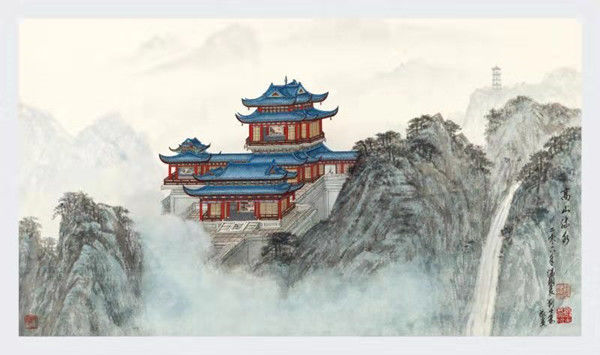
《高山流水》(43*76cm)
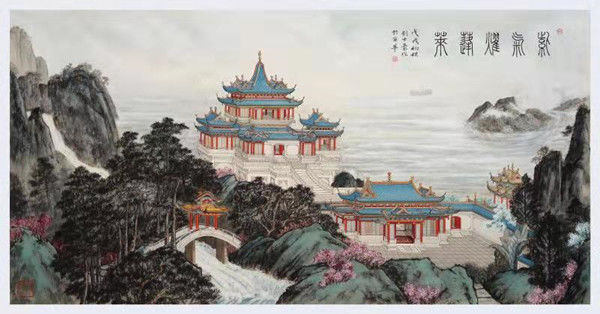
《紫氣耀蓬萊》(92*181cm)
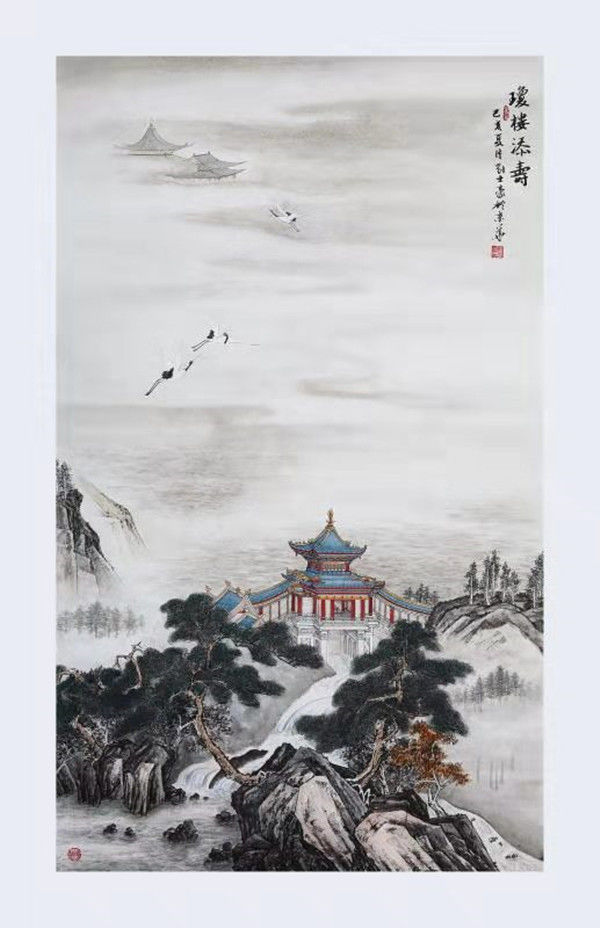
《瓊樓添壽》(70*114cm)

《瓊樓春曉》(92*118cm)
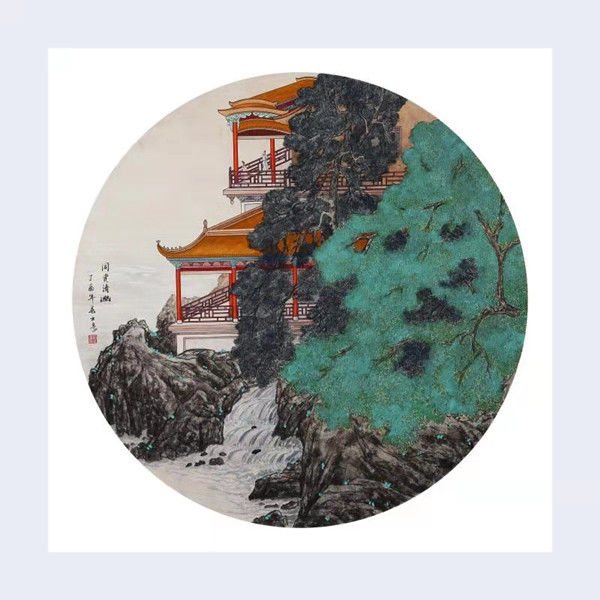
《同賞淸幽》(85*85cm)

《觀海聽濤》(94*88cm)

《空山不見人》(92*113cm)
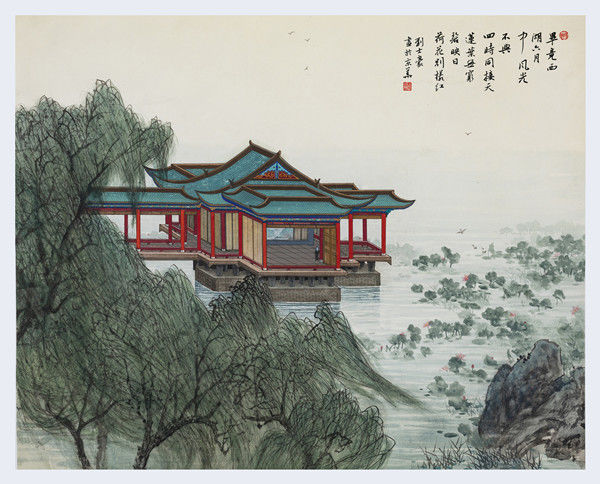
《西湖六月》(92*115cm)
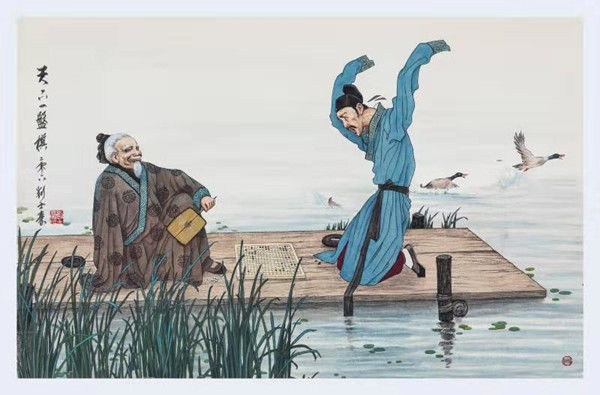
《天下一盤棋》(65*102cm)

《深山行旅》
聯繫方式: 13693313980 13146175519

- 新闻
- 房产
- 汽车
- 娱乐
- 体育





















